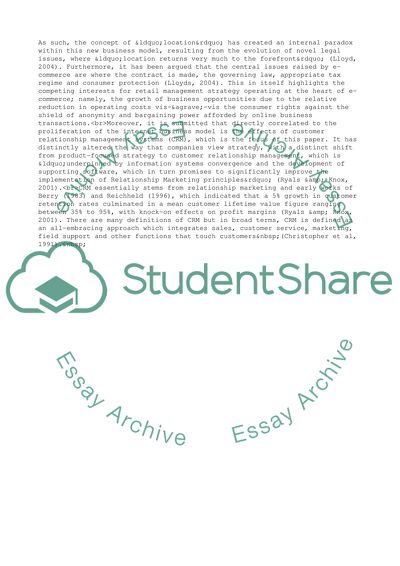Cite this document
(Management Information Systems - Customer Relationship Management Research Paper, n.d.)
Management Information Systems - Customer Relationship Management Research Paper. Retrieved from https://studentshare.org/management/1721944-management-information-systems-customer-relationship-management-systems-in-retail-sector
Management Information Systems - Customer Relationship Management Research Paper. Retrieved from https://studentshare.org/management/1721944-management-information-systems-customer-relationship-management-systems-in-retail-sector
(Management Information Systems - Customer Relationship Management Research Paper)
Management Information Systems - Customer Relationship Management Research Paper. https://studentshare.org/management/1721944-management-information-systems-customer-relationship-management-systems-in-retail-sector.
Management Information Systems - Customer Relationship Management Research Paper. https://studentshare.org/management/1721944-management-information-systems-customer-relationship-management-systems-in-retail-sector.
“Management Information Systems - Customer Relationship Management Research Paper”, n.d. https://studentshare.org/management/1721944-management-information-systems-customer-relationship-management-systems-in-retail-sector.


